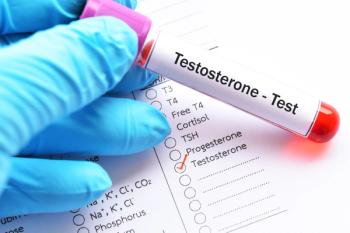
Can Adulthood Attachment Mediate the Effects of Childhood Trauma on Migraine?
The direct effect of childhood trauma on migraine is outweighed by the mediation effect of adulthood attachment, according to a study published in the International Journal of Environmental Research and Public Health.
The direct effect of childhood trauma on
Individuals exposed to childhood trauma tend to exhibit insecure attachment patterns and are more prone to chronic and pain-related conditions, such as migraine. However, “not all individuals exposed to childhood trauma manifest somatic symptoms as adults,” researchers noted.
Attachment theory claims that infants develop expectations about caregivers’ ability and responsiveness based on the quality of parental care they receive. The expectations then manifest in adulthood relationships.
Insecure attachment can be classified in 3 manners—preoccupied, dismissive, and fearful—and evidence suggests that “insecure attachment representations are linked to dysregulated physiological responses to stress, risky health behaviors, susceptibility to physical illness, and poorer disease outcomes.”
To better understand the mediating role of attachment in the association between childhood trauma and adulthood chronic health conditions, researchers conducted a cross-sectional, questionnaire-based survey study.
A total of 1800 participants from the Czech Republic completed the Childhood Trauma Questionnaire (CTQ) and The Experience in Close Relationships Revised (ECR-R) questionnaire to assess attachment anxiety and avoidance, in person. Average participant age was around 47 years, and 48.7% of the sample were male.
Of the 1800 participants, 223 reported migraine presence. The remaining participants reported other pain-related conditions excluding migraine (n = 632), chronic conditions other than pain (n = 540), or no chronic conditions (n = 405). In addition, 129 respondents reported migraine together with at least 1 other type of pain (57.8% of those who reported migraine).
Researchers adjusted structural equation models for sociodemographic variables including age, gender, education, and economic status.
Analyses revealed:
- Correlation between childhood trauma and adulthood attachment was found to be low to moderate, with values from 0.06 to 0.37
- Attachment anxiety had higher correlations with childhood emotional abuse, while attachment avoidance was more strongly correlated with emotional and physical neglect
- Migraineurs were the only group in which correlations between emotional and physical neglect and attachment anxiety and avoidance were approximately the same (approximately 0.30)
- Higher exposure to childhood maltreatment increased the likelihood of reporting migraine and decreased the likelihood of reporting no chronic conditions
- Adulthood attachment fully mediated the effect of childhood trauma on reporting migraine (bootstrap p value for the total effect: P = .009; for the total indirect effect: P = .041)
“Higher exposure to childhood maltreatment increased the likelihood of reporting insecure attachment in adulthood; furthermore, the insecure attachment style resulted in a higher likelihood of reporting migraine,” researchers found. They continue, “the direct effect of childhood trauma on reporting migraine lost its significance.” However, this effect was not found for other health conditions apart from migraine.
As individuals with high attachment anxiety are prone to experience many interpersonal interactions as a source of distress, researchers hypothesize being daily under stress may be a factor in the onset of migraine, triggering some attacks.
Recent studies have also found that children exhibiting severe migraine report inhibited anger and subjects with headaches report higher levels of suppressed anger.
“Patients with frequent and chronic migraine in particular should be screened for the occurrence of childhood trauma and attachment insecurity,” authors conclude. “We can assume that there is an association between childhood trauma, attachment insecurity, and migraine, regardless of the extent to which they are involved in the etiopathogenesis, course, and treatment outcomes of migraine.”
Reference
Kascakova N, Furstova J, Hasto J, et al. When a head is about to burst: attachment mediates the relationship between childhood trauma and migraine. Int J Environ Res Public Health. 2020;17(12):4579. doi:10.3390/ijerph17124579
Newsletter
Stay ahead of policy, cost, and value—subscribe to AJMC for expert insights at the intersection of clinical care and health economics.















































